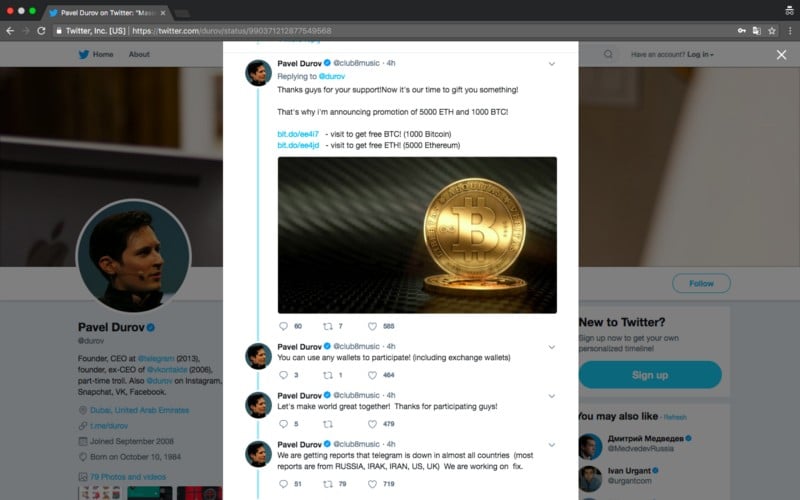Fake Elon Musk Account Promotes Bitcoin Scam on Twitter

Cryptocurrency scammers have impersonated Tesla CEO Elon Musk, by hacking and compromising several verified Twitter accounts on November 5, 2018. According to Business Insider, while Twitter has previously attempted to stop impersonation scams, the hackers have managed to promote their tweets and capitalize on the cryptocurrency frenzy.
Scammers Hack Verified Accounts
On November 5, 2018, a scammer hacked Pathe UK, a British film studio’s Twitter account. The page quickly turned into an Elon Musk impersonation account. The hacker managed to subtly change the “L” in Elon Musk’s name to a different, yet similar character so the account would not be flagged and reported to Twitter’s security team.

(Source: Business Insider)
The Elon Musk impersonation scam promised a free giveaway of 10,000 bitcoin (BTC) to the cryptocurrency community. Furthermore, the hacker also mentioned that Musk has left his post as the Director of Tesla, and decided to host this giveaway to provide thanks for his support. The post had a link to the cryptocurrency scam which required users to verify their address by sending 0.1 to 1 bitcoin the scammer’s payment address.
Pathe UK managed to regain control of the Twitter account soon afterward. They sent out a tweet apologizing to their followers for the confusion and have managed to delete the false Elon Musk tweets. Pantheon Books’ Twitter account was also taken over by an Elon Musk impersonator. The scammer removed the profile picture and changed the name to a single period.
While Twitter impersonation scams occurred in the past, the hacker managed to promote the Musk impersonation tweet through Twitter’s advertising service. The tweet was not only targeted towards the verified account’s followers, but it also managed to enter the timeline of everyday users.
Simple Twitter Spam
Unfortunately, impersonation scams tend to appear quite often. In the past, other high-profile individuals in the technology and cryptocurrency sector have also been impersonated. Another example is Telegram CEO Pavel Durov.

(Source: BlockShow)
After compromising a Twitter-verified account, the hacker would change the name to the person they wanted to impersonate, like “Elon Musk” or something similar. They would then alter the profile picture to Musk’s existing profile picture and tweet as if they were him.
To add greater legitimacy to the account, the scammers would show up in Musk’s mentions, acting as if it was Musk who was Tweeting. Then, they would provide a link to a cryptocurrency scam, claiming that the Tesla CEO is conducting a cryptocurrency giveaway, which results in the users sending their cryptocurrencies to the scammers.
In September 2018, Musk reached out to the founder of Dogecoin to help him get rid of Twitter scammer bots. There seems to be a long way ahead as scammers continue to get more creative and robust.














